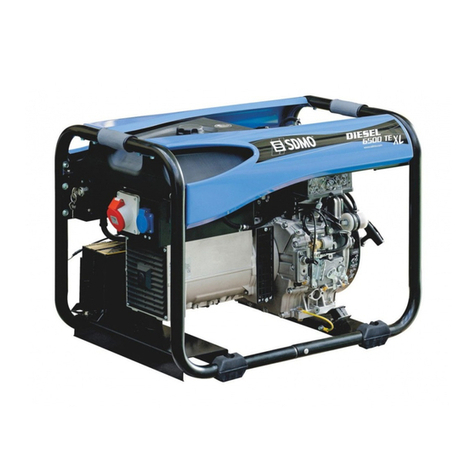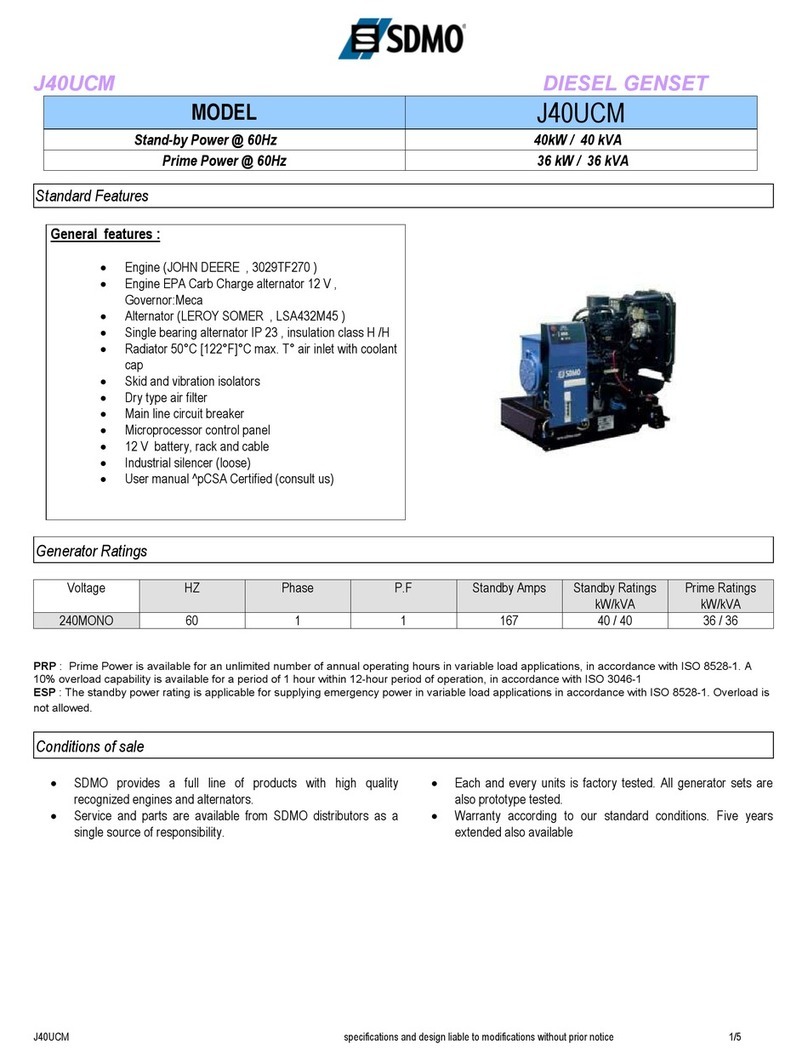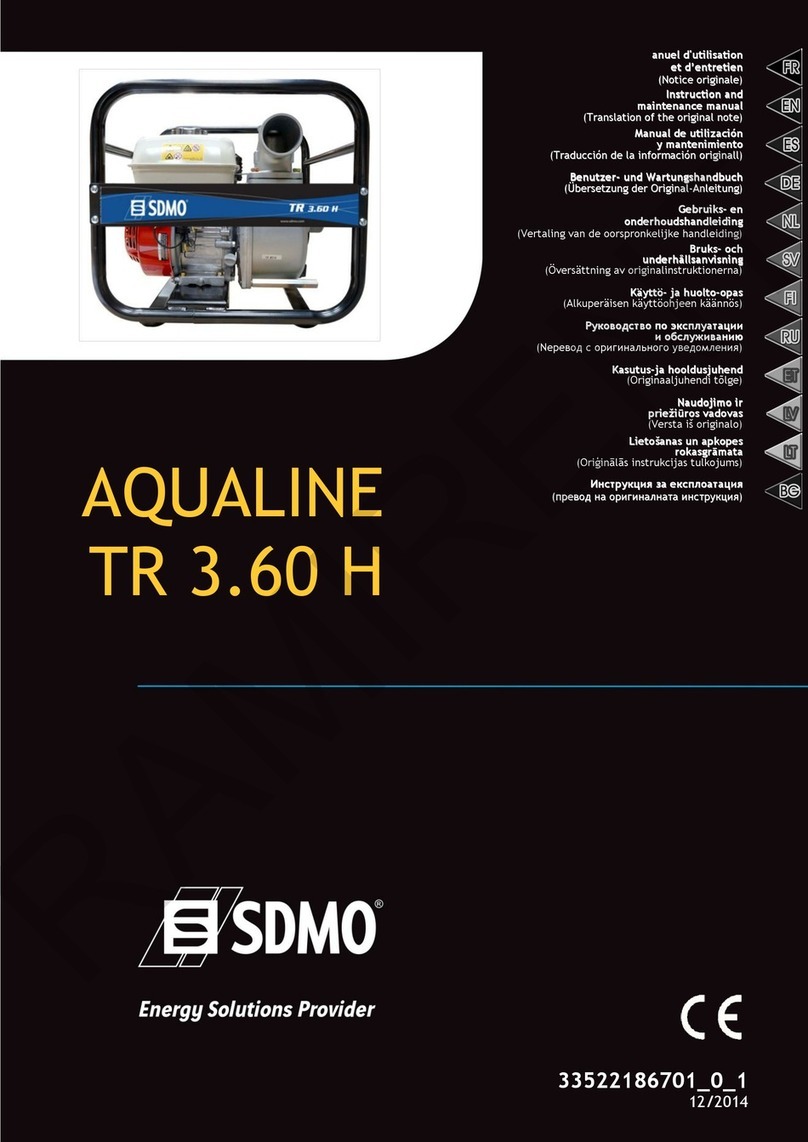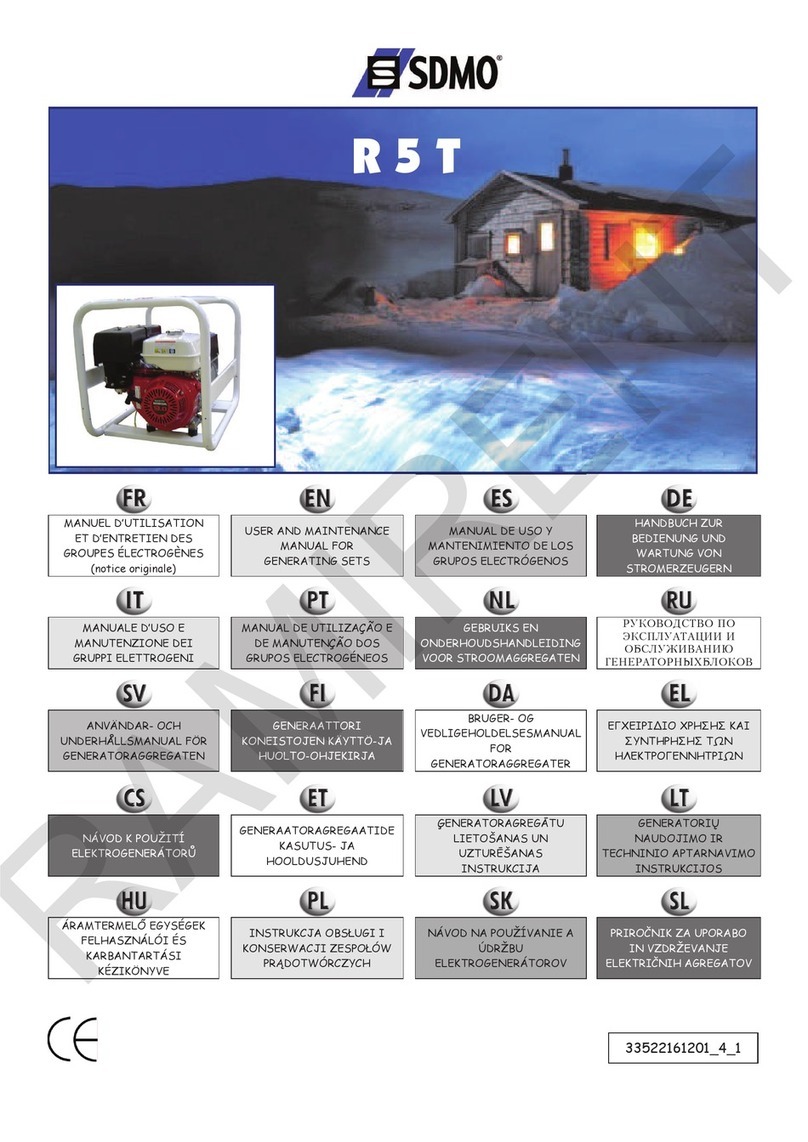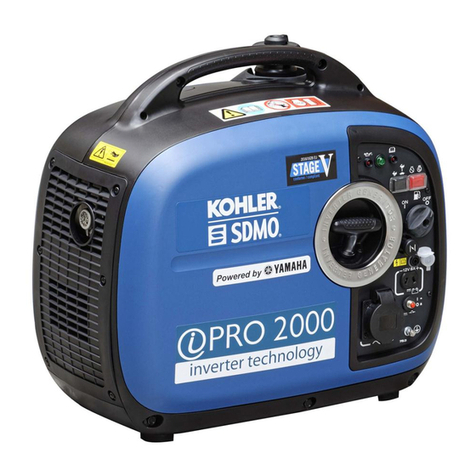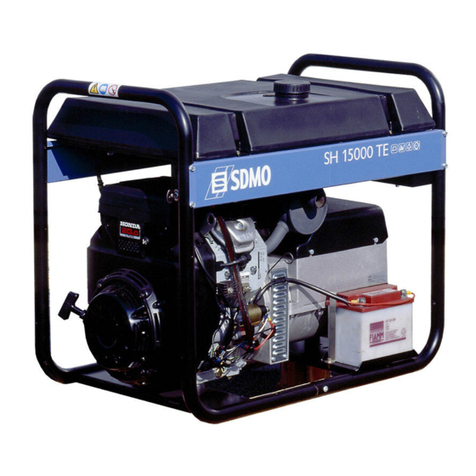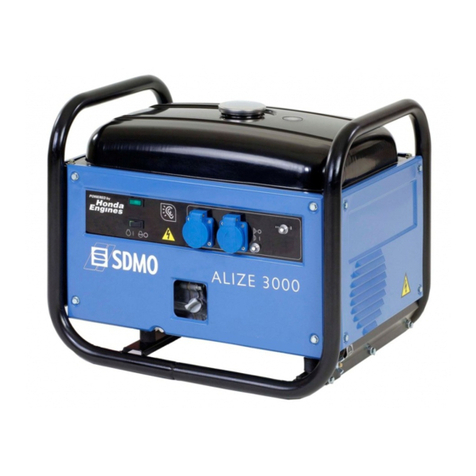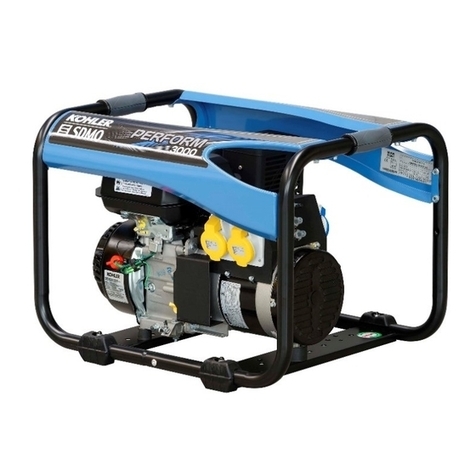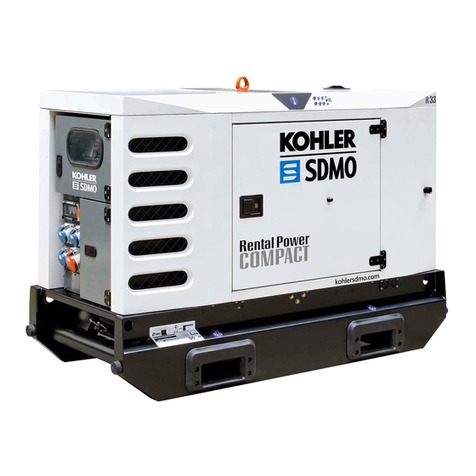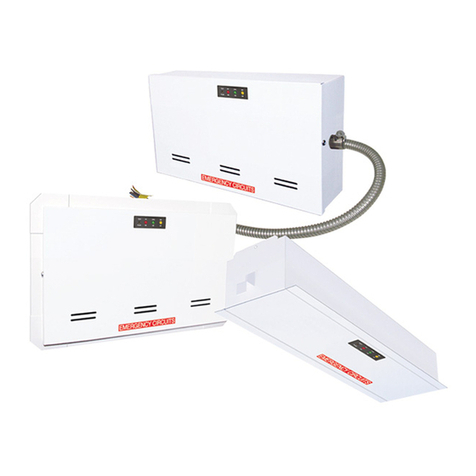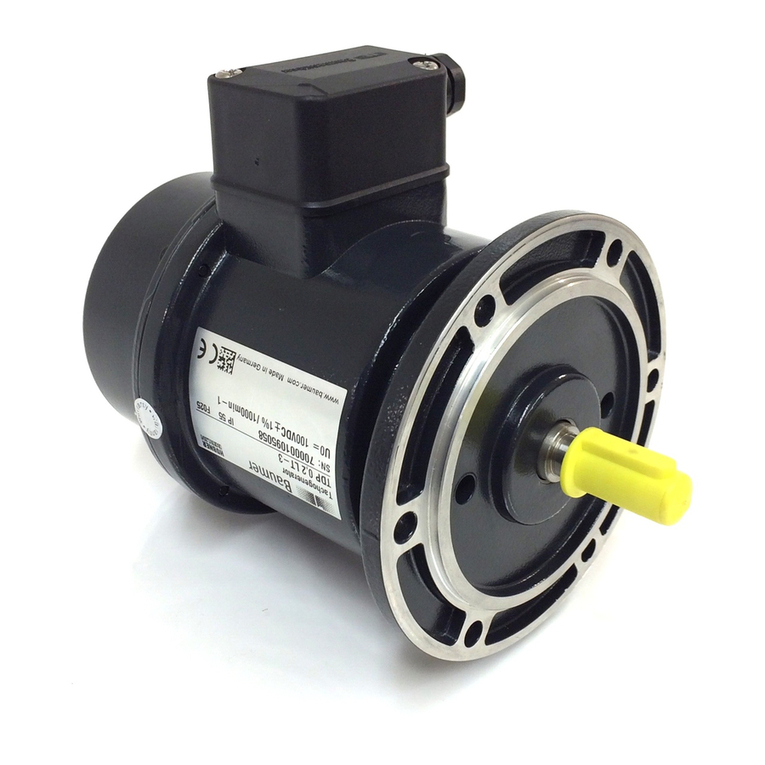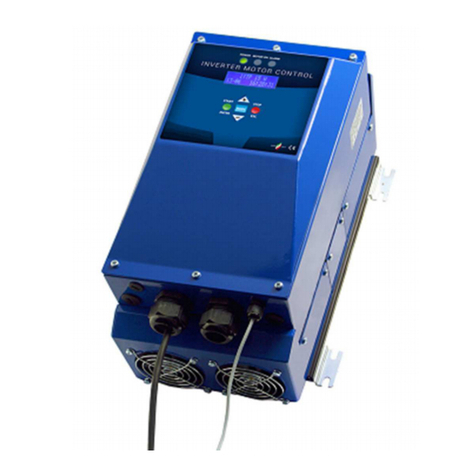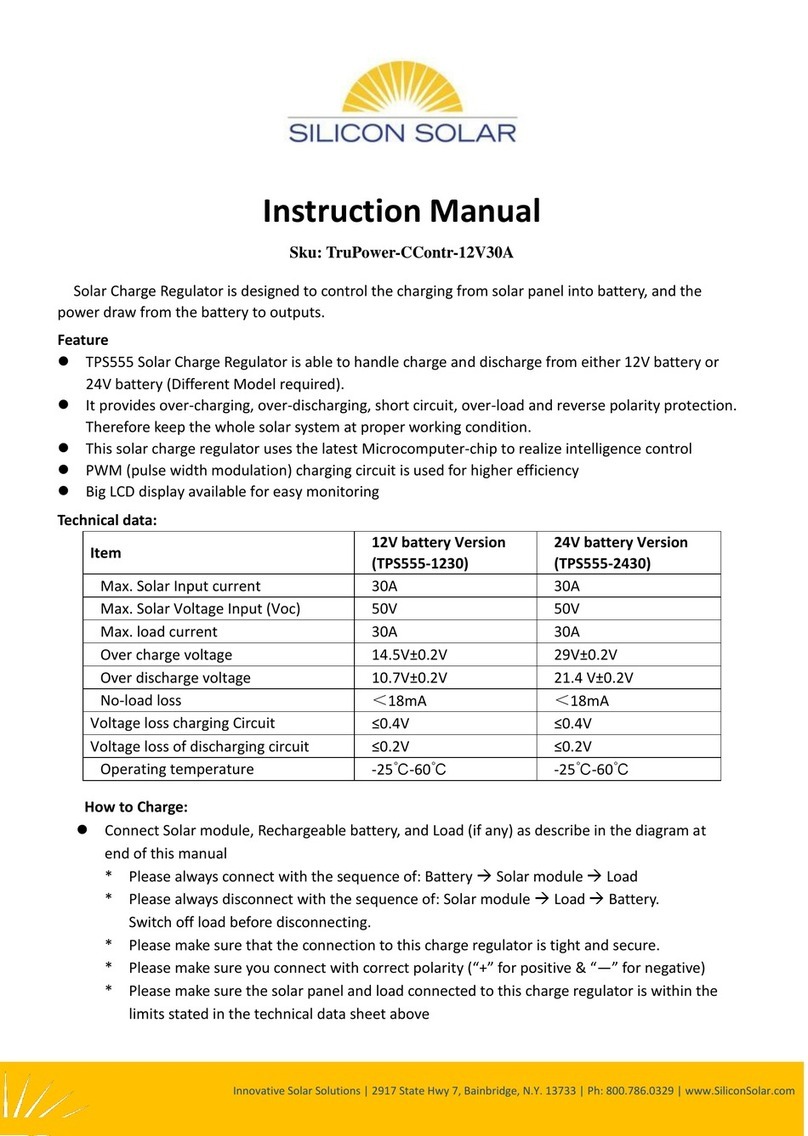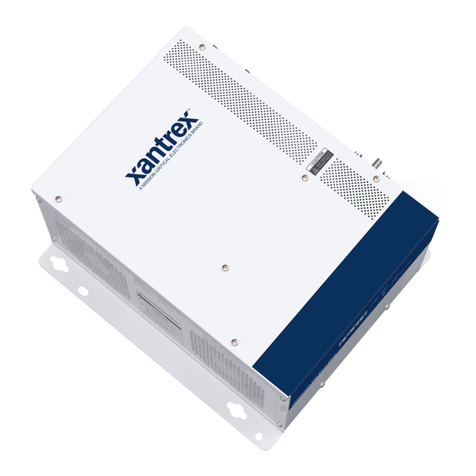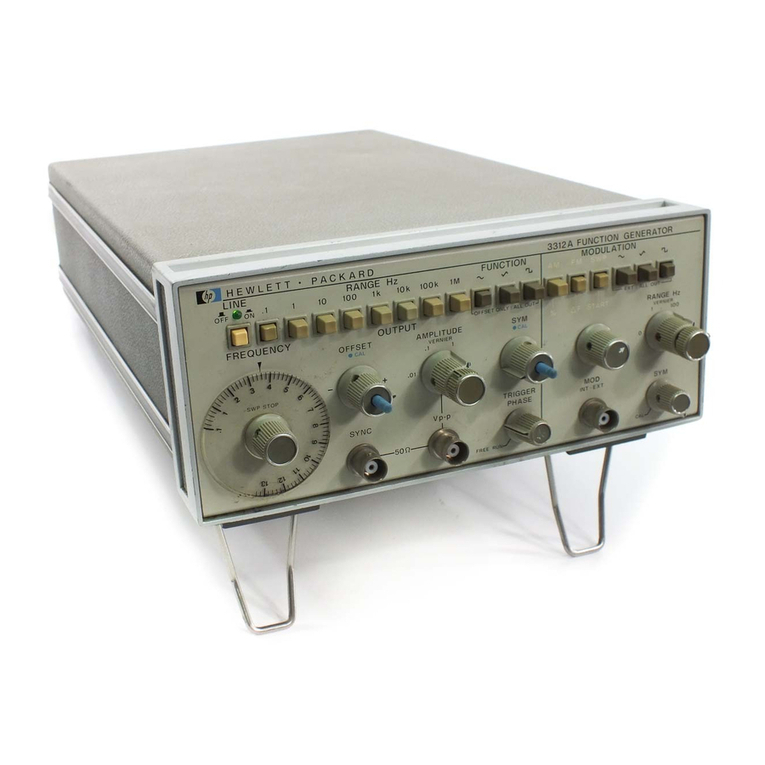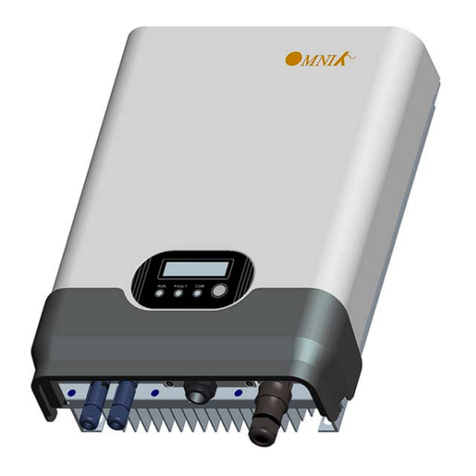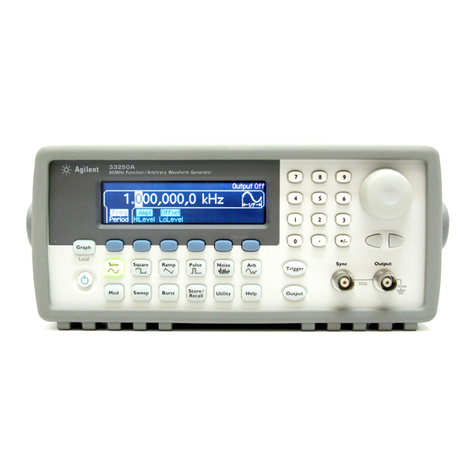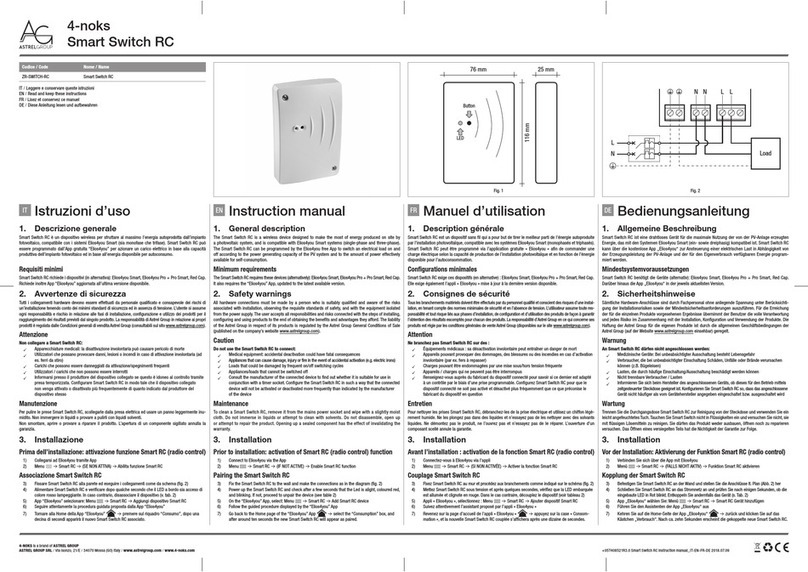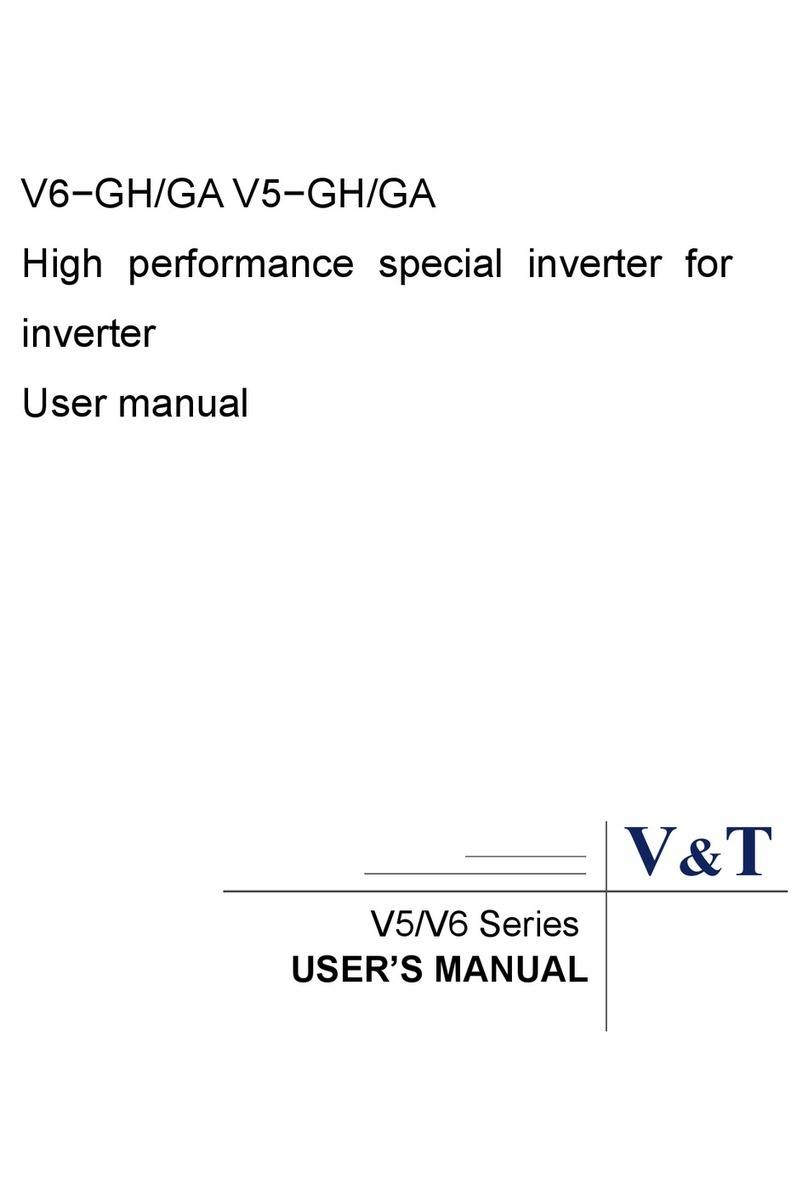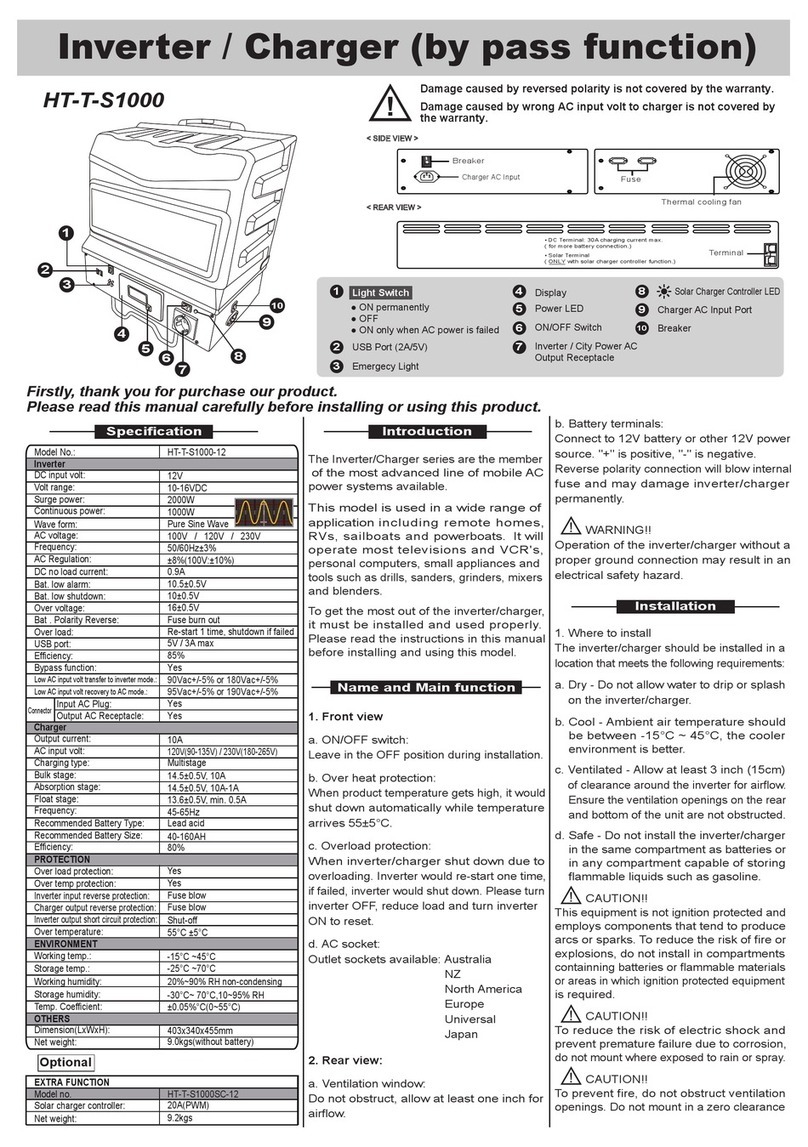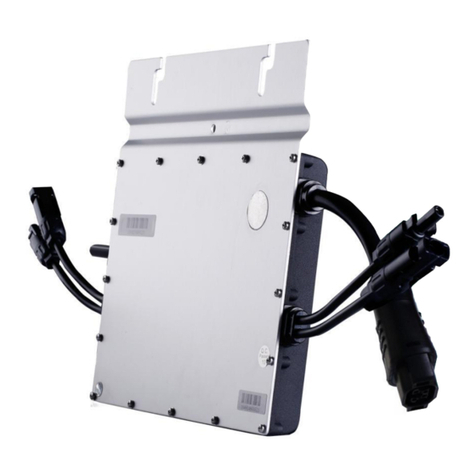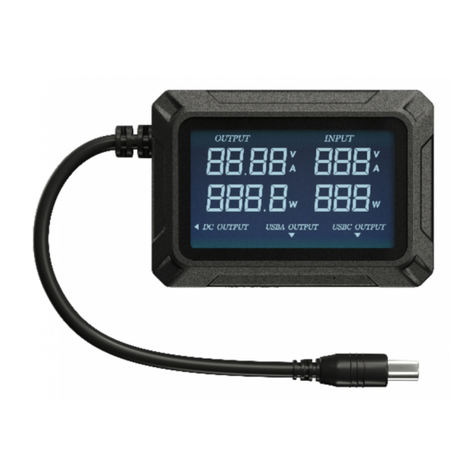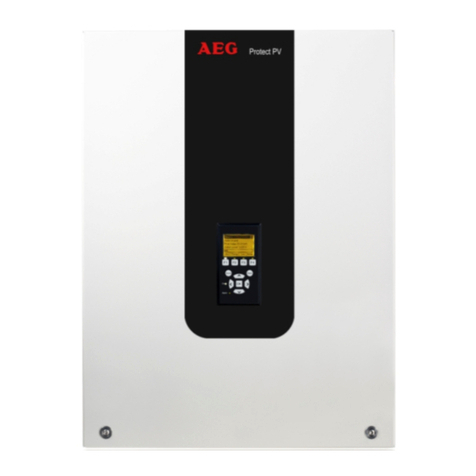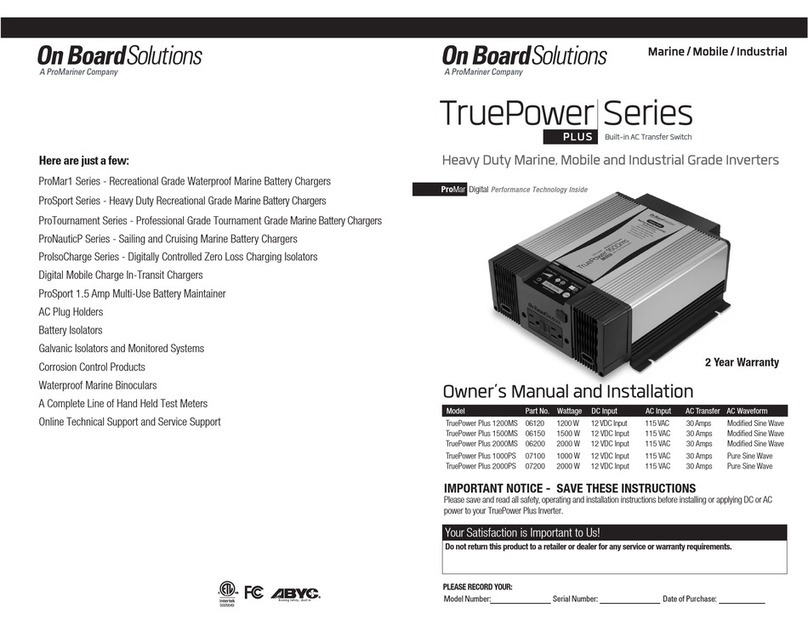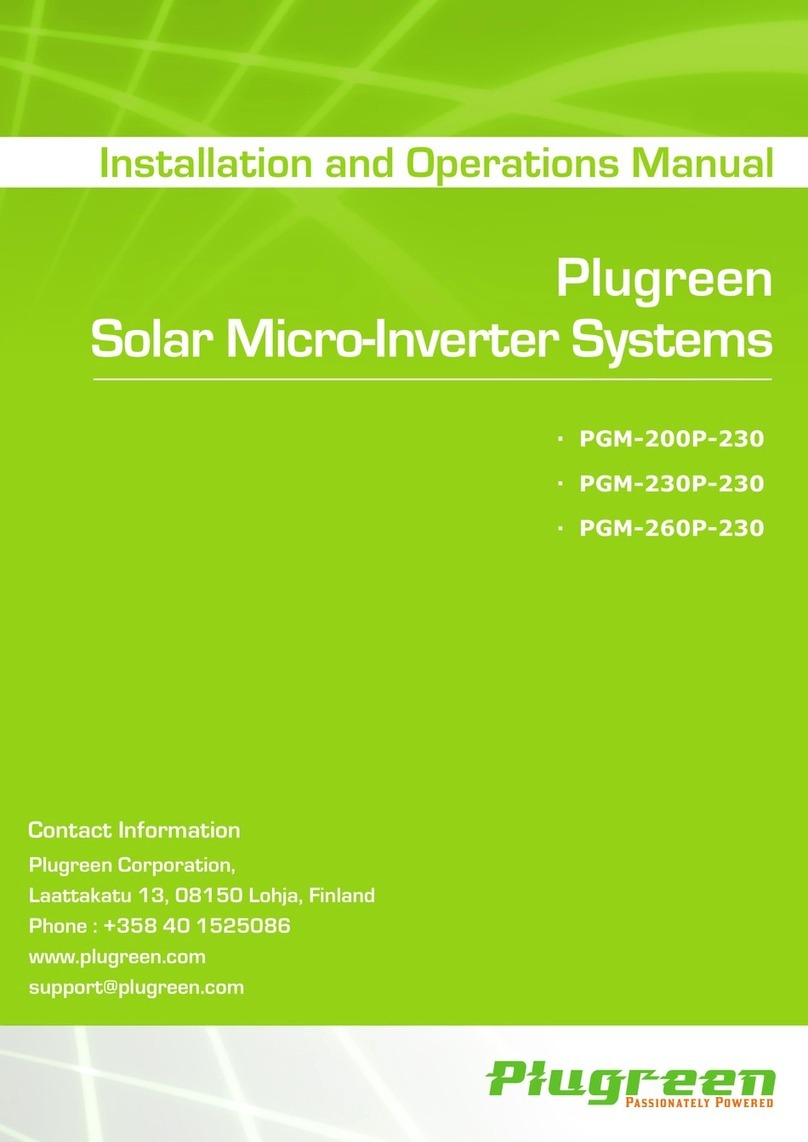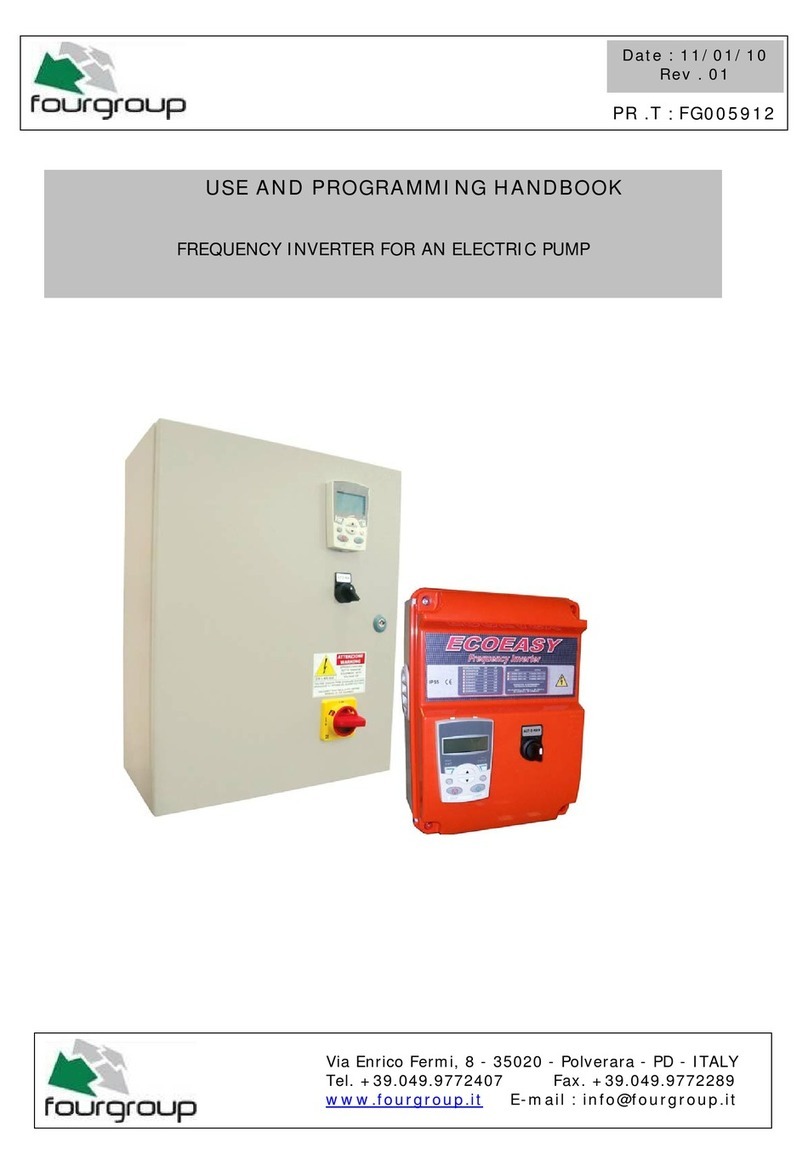
4.3 Checking the engine oil level and topping up
Always check the oil level before starting the unit.
1. Place the unit on a flat, level surface. If the unit has been used, leave to cool for at least 30 minutes.
2. Using a screwdriver, remove the screw (A9-E1) and the inspection flap (A10-E2).
3. Remove the oil filler cap (A11-B1) and visually check the oil level: the oil level (B2) should reach the filler neck.
If the oil level is too low, use a funnel to top up with oil that complies with the specifications given in this manual.
4. Refit and tighten the oil filler cap.
5. Check that there are no oil leaks, and wipe away any traces of oil with a clean cloth.
6. Refit the inspection flap and tighten the flap screw.
4.4 Checking the fuel level and topping up
With the unit on a flat, level surface, visually inspect the fuel level on the indicator (A12): the red marker on the indicator should be
between the maximum level (F = full) and the minimum level (E = empty). If necessary, fill with fuel:
1. Fill up when the unit is switched off and the engine cold.
2. Unscrew the fuel tank cap (A13).
Do not remove the screen filter (A14-C1) when topping up.
3. Fill the tank up to the red mark on the screen filter using a funnel, and taking care not to spill any fuel.
Do not overfill the tank; there should not be any fuel in the filler neck.
4. Carefully tighten the fuel tank cap.
5. All traces of fuel should be wiped off with a clean cloth.
4.5 Starting the generating set
1. Put the economic idle speed (A15) in the (Hare) position.
2. Turn the fuel tap (A16) to ON.
3. If the outside temperature is low, or if the engine is cold, pull the starter (A17) fully.
4. Set the switch (A7) to .
The generating set starts and the operating warning light (A18) comes on.
4.5.1 Manually start the generating set
In the event of an electric starting fault, start the generating set manually:
1. Set the switch (A7) to the position.
2. Slowly pull the starter/recoil reel handle (A19) until there is some resistance, then let it return slowly.
3. Pull the starter-recoil reel handle hard, quickly then let it return to its initial position slowly.
If the generating set does not start, repeat the operation until the engine starts.
4. The generating set starts and the operating warning light (A18) comes on.
4.6 Using the electricity supplied
1. Allow the unit speed to stabilize and the temperature to rise (approx. 3 to 5 min.).
2. Press the starter (A17) gradually to return it to its original position.
The unit should not shut down.
3. Connect the equipment to be used to the electrical socket (A20) on the unit.
4. Put the economic idle speed (A15) in the (Tortoise) position.
If devices requiring considerable starting current are being used, leave the economic idle speed switch in the (Hare) position.
For France only: Our units are fitted with sockets where the earthing contact is made using side tabs.
In exceptional cases where the equipment is only fitted with an earthing pin, use an adaptor. After use,
always disconnect the adaptor and store it carefully, away from sources of moisture. Always ensure
that the socket cover on the unit is closed: risk of damage (loss of seal).
Earthing pin. Use
the adaptor.
4.7 Charging a battery (12V socket)
This unit is equipped with a 12 V socket (A21) which can be used for occasional brief battery charging operations up to 40Ah
maximum, when semi-discharged.
1. Disconnect the battery and remove it from the vehicle.
2. Start the unit.
3. Connect the red cable to the positive battery terminal (+).
4. Connect the black cable to the negative battery terminal (-).
5. Press the circuit breaker of the 12V socket (A22) then connect the charging cables of the battery to the 12V socket of the
unit.
6. Put the economic idle speed (A15) in the (Hare) position to start charging.
7. Check the battery regularly using a hydrometer (acidimeter) and use a charge controller to monitor the charge.
The unit does not have a charge controller, therefore the charge is not regulated or limited.
8. Once charging is complete, switch off the unit then disconnect the cables from the battery and the unit.
9. Store the cables and refit the battery in the vehicle, observing the polarities.
Simultaneous use of the electrical socket and 12V socket is possible, but the total consumption in watts (W) must not exceed the
nominal power of the unit.
